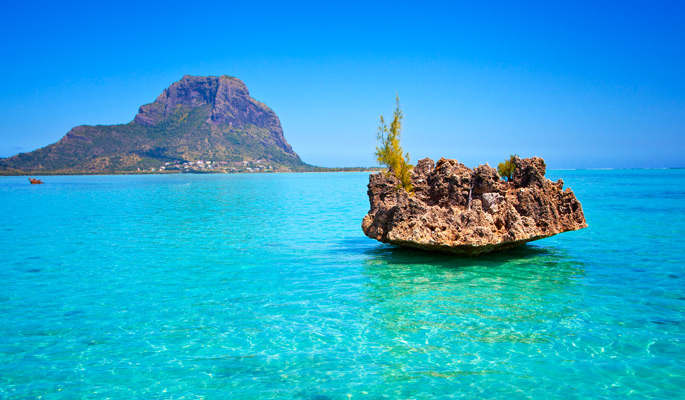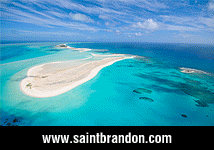Catamaran Cruises Mauritius - Ile aux Bénitiers
About 500 metres off the coast at La Gaulette (South West of Mauritius) is l'ile aux Bénitiers. It is a large coral sand island approximately two kilometres long and 500 metres at its widest point and 65 hectares in area. The island itself has very little biodiversity value since it has a highly modified vegetative cover and is used as a coconut plantation. Since 1927 the islet has been leased to a private company that tends the coconut plantations there. On the northern tip of the island there is a small colony of migratory sea birds.
The lagoon is vast and shallow with large coral fields in relatively good health. The region around the island is the fishing ground of locals who for years have used the islet for leisure purposes and a stop over when fishing in the lagoon. Over the past decade or so, a number of small entrepreneurs have used the islet to bring tourists there on day trips or on camping. It has become a very popular location for tourists and on certain days up to a dozen boats of all shapes and sizes can be seen off the islet.
This never-ending stream of tourists and day-trippers carries with it a number of consequences. For instance, part of the island is littered with solid wastes and shows traces of fires due to improvised stoves. It even appears that fires have broke out on a few occasions, especially in the southern tip.
Sand erosion is also a severe problem in the southern part and this is exacerbated by illegal sand removal.
In February 2002, the local group FAIL (Food and Allied Industries Ltd) together with the lease holders, the company Soolaman Nubheebucus and Co Ltd, announced their intention of building a hotel there that would be made up of bungalows comprising 97 suites in all. Almost immediately a number of individuals and organisations have voiced their opposition to the project which has received a fair amount of press coverage lately.
It appears that the project may be financed, in part, by the European Investment Bank. It is a European Community Institution that has attracted a fair amount of criticism from European environmental organisations for its lack of proper environmental monitoring of the projects it finances.
The project has not been submitted to the authorities yet and is still in the preliminary planning stages as of May 2002. Such a project will have to go through the Environmental Impact Assessment procedures. For years the granting of an EIA license was a virtually guarantee for very few EIA reports were rejected by Government. However since the Blue Bay Affair where a hotel project on a small islet in Blue Bay Marine Park was rejected by Government, in part due to strenuous opposition from environmental organisations, the EIA procedure is no longer the rubber stamp it once was. A fact that will have to be taken more seriously by would be promoters.
In October 2002, the group FAIL has made it publicly known that it had abandoned the project on the islet because the conditions Government had imposed are incompatible with what they had in mind. In November 2002, the Mauritian Government announced that there is not going to be any hotel development on the islet, which instead will be transformed into a nature park for the public. This is a surprising change in Government policy which for decades had been to allow promoters to transform vast tracts of public coastal lands and beaches into hotel resorts to which the average mauritian had subsequently little access. Whether this policy will actually be implemented remains to be seen.
source from: iels.intnet.mu


















